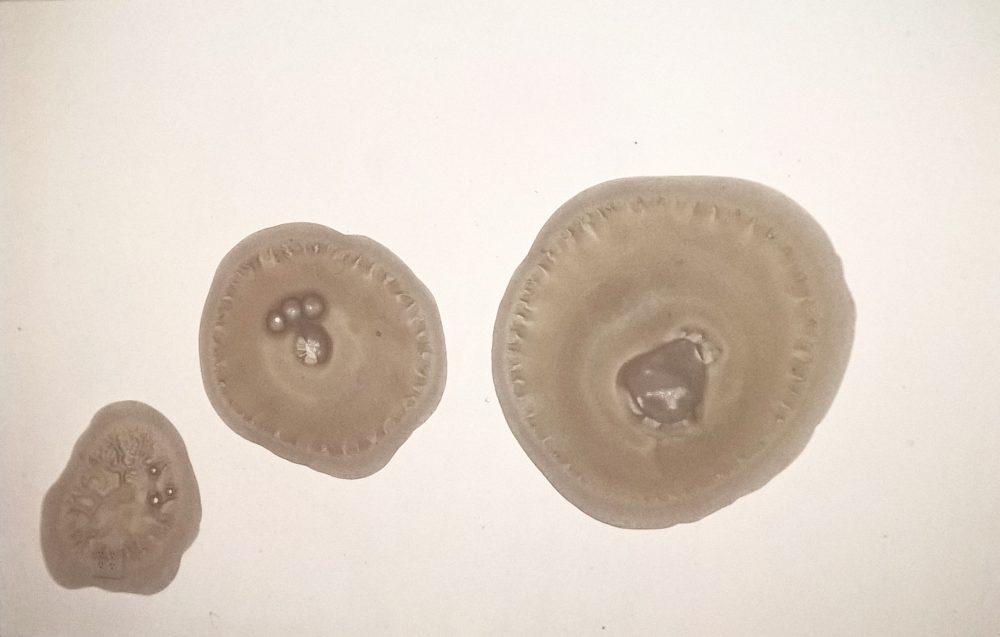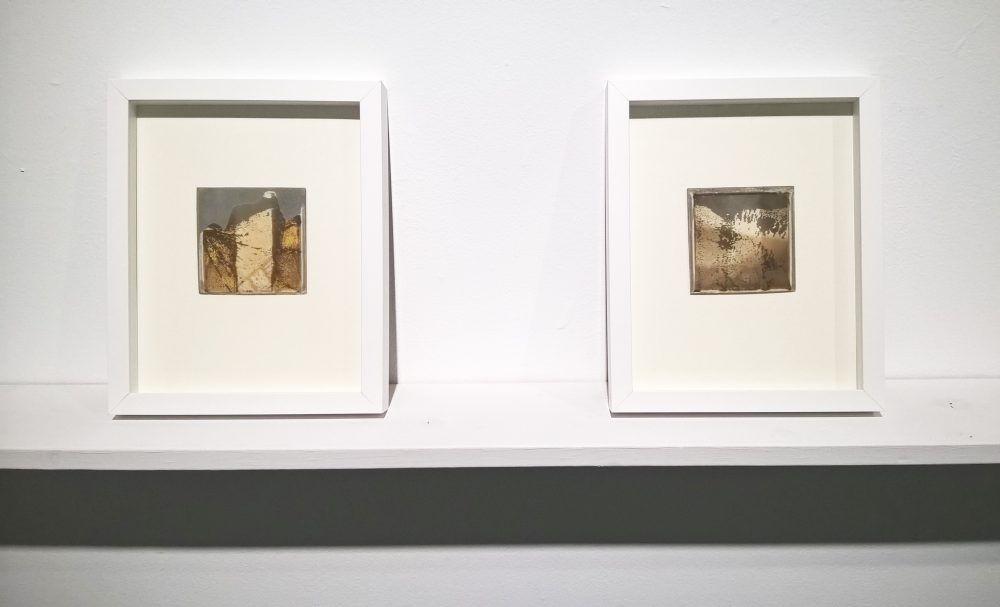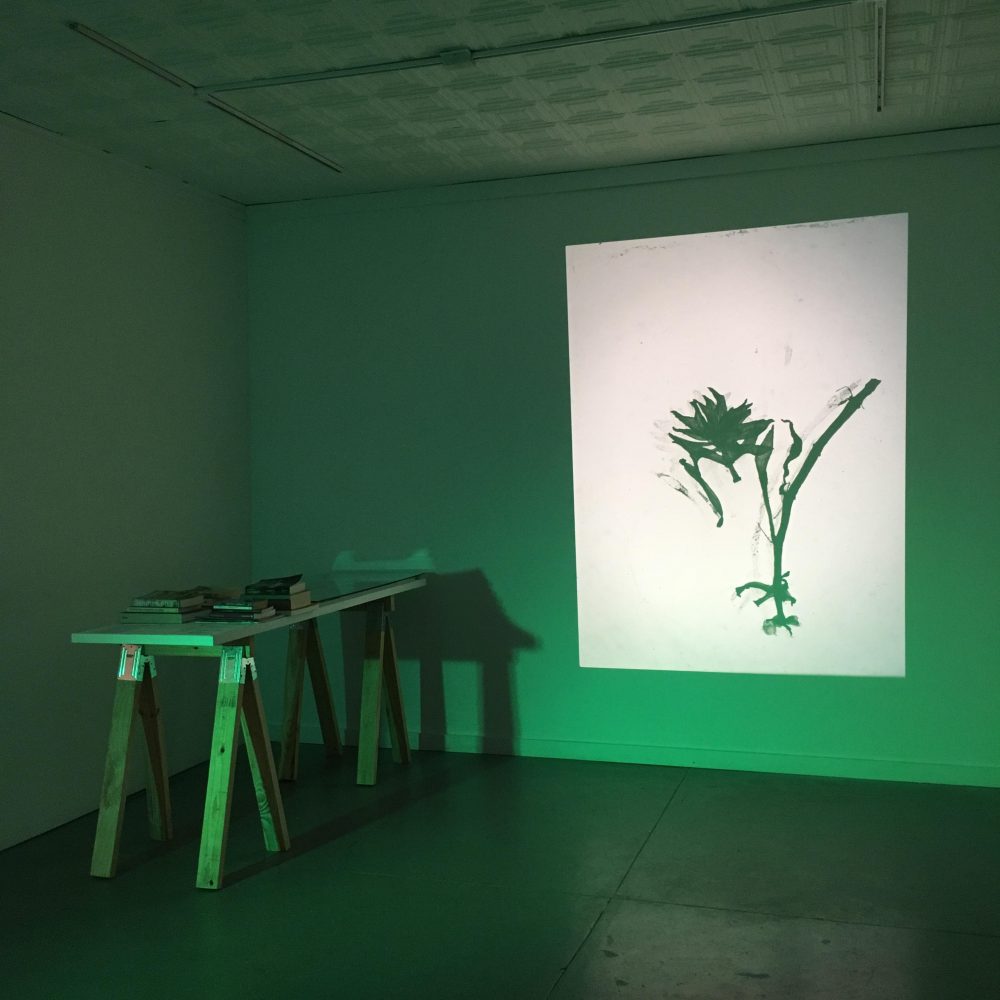Temporary Gestures: Manon Bellet at Good Children Gallery
Charlie Tatum visits Manon Bellet’s recent exhibition at Good Children Gallery, which takes inspiration from Gustav Metzger’s experiments in “auto-destructive” and “auto-creative” art.

Manon Bellet, Toxicité Radieuse, 2017. Liquid crystal on glass slides. Courtesy the artist.
A projector shoots two hazy rectangles onto the gallery’s white walls, each filled with grey cell-like blobs. Click. A new slide appears. The curved shapes look like something from high-school biology class, with each image having its own internal structures—mysterious groupings of small concentric circles, collections of veiny paths, and jagged chasms of blank space constitute a landscape of rippling textures.
Toxicité Radieuse, 2017, is the centerpiece of Manon Bellet’s exhibition of the same name at Good Children Gallery. The work looks back to Gustav Metzger’s experiments in “auto-destructive art,” which imagined art as the process of an object, situation, or installation’s own obliteration. (Metzger is perhaps best known for his bombastic outdoor performance in London in 1961, in which the artist sprayed hydrochloric acid on sheets of nylon that quickly began to tear and dissolve.) Bellet takes direct inspiration from Metzger’s Liquid Crystal Environment, 1965, an immersive installation created from projectors whose heat produced an array of psychedelic colors from glass slides filled with a liquid-crystal solution.
And while Bellet’s installation is not exactly novel (Toxicité Radieuse uses similar liquid crystals that grow and move over time, a process too slow to witness in person during one viewing), it’s hard to imagine Metzger caring too much. Metzger’s practice consisted of time-based interventions in public space—in his words, “a form of public art for industrialized societies”—that necessarily evolve with new creators, viewers, and contexts. Bellet reframes Metzger’s premise within our contemporary obsessions with instantaneity, obsolescence, and representation—a trifecta glaringly evident from the popularity of Snapchat’s difficult-to-monetize model of vanishing picture and video messages. While the slides in Toxicité Radieuse do eventually rotate back on view, the crystal formations will never appear the same—and the materials are unstable and un-archival by design.

Manon Bellet, Solar Dust, 2015–16. Experiments on expired Polaroid film. Courtesy the artist.
Similarly, Bellet’s Solar Dust photographs, 2015–16, which contain smearings of gold, grey, and black chemicals produced by expired Polaroid film, are sensitive to time and touch. These abstract works perform their own outmoded status: Just as the emulsion is no longer able to capture an image, the medium too is unable to keep up with the rapid-fire feedback loop of digital technology. In Bellet’s works, representation itself is only temporary, a notion that complicates our ingrained understanding of photographs and artworks as means of understanding the places, eras, and situations in which they were produced. Her practice has often embraced the fleeting; last year, Bellet organized a musical performance at the Contemporary Arts Center in which sonic vibrations caused her wall sculpture Brève braises, 2010–14, to disintegrate and fall to the floor.
In the back room of Good Children Gallery, Bellet has set up a reading library, giving a peek into her practice and highlighting texts on Metzger, as well as the delicate “Glass Flowers” at the Harvard Museum of Natural History, which were created as tools for botany research in the late 19th and early 20th centuries. An essay by science historian Lorraine Daston—excerpted in the gallery in a display case on saw horses—describes an irreconcilable tension between the flowers’ glassy objecthood and their use as stand-ins for the species they so carefully mimic. Daston’s words form a backdrop for one final work, a green-toned projection of a single slide that encases dried specimens of endangered plant species from Louisiana. In the face of a rapidly eroding coastline, the stark outlines within Geocarbon Minimum, 2017, are a tiny monument in the face of the knowledge that this time and place will one day be gone forever, perhaps sooner than we expect.

Manon Bellet, Geocarbon Minimum, 2017. Dried flowers on slide. Courtesy the artist.
Editor's Note
Manon Bellet’s “Toxicité Radieuse” was on view April 8–May 7, 2017, at Good Children Gallery (4037 St. Claude Avenue) in New Orleans.



